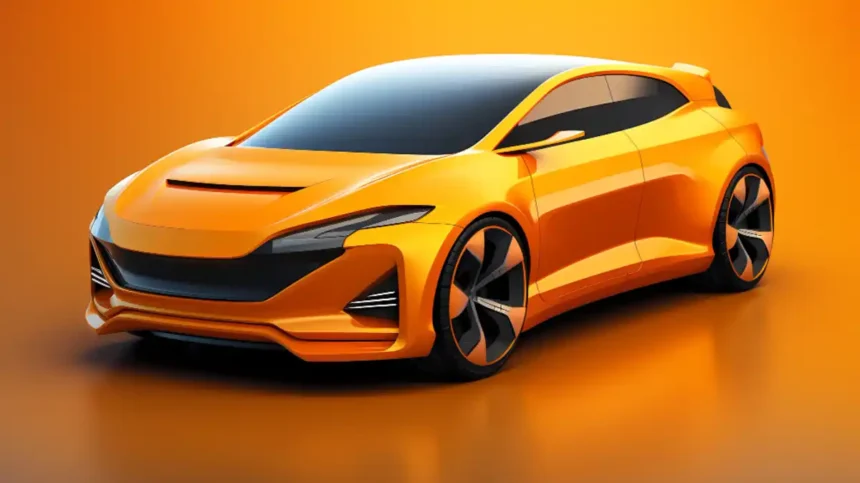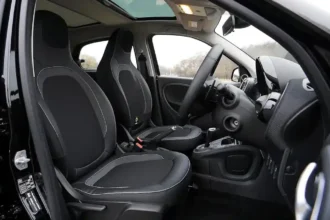In an era where everything from smartphones to smart homes receives regular software updates, have you ever thought about how your vehicle keeps pace with technological advancements? The answer lies in Over-the-Air (OTA) updates. This cutting-edge technology is transforming the automotive industry, allowing manufacturers to deliver software updates directly to vehicles without requiring a trip to the dealership. But what exactly are these updates, how do they work, and why should you care?
In this article, we’ll explore the rise of OTA updates in cars, their benefits, potential challenges, and what they mean for the future of driving in the USA.
What Are Over-the-Air Updates?
Over-the-Air updates refer to the process of wirelessly delivering software updates and new features to vehicles. These updates can enhance everything from navigation systems and infotainment features to critical safety functions and engine performance. Traditionally, car owners had to visit a dealership for any software improvements or system fixes. With OTA technology, however, vehicles can receive these updates remotely, making the process much more convenient.
How Do Over-the-Air Updates Work?

The process involves several steps:
- Data Transmission: Updates are sent from the manufacturer’s servers to the vehicle’s onboard system via the internet, often using Wi-Fi or cellular networks.
- Installation: The vehicle receives the update and prepares for installation. Most systems allow users to schedule updates at their convenience, minimizing disruption.
- Verification: After installation, the system typically verifies that the update has been applied correctly, ensuring everything is functioning as intended.
This seamless process represents a significant advancement in automotive technology, particularly in the USA, where vehicle connectivity is rapidly expanding.
Benefits of Over-the-Air Updates in Cars
The rise of OTA updates comes with numerous advantages, making them a game-changer for car manufacturers and owners alike. Here are some of the most significant benefits:
- Convenience
- No need for dealership visits; updates can be installed at home or anywhere with internet access.
- Enhanced Features
- OTA updates allow manufacturers to roll out new features quickly, ensuring that vehicles remain current without requiring new hardware.
- Improved Performance
- Regular software updates can optimize vehicle performance, from engine efficiency to battery management in electric vehicles.
- Security Enhancements
- Timely updates can patch vulnerabilities in vehicle software, improving overall cybersecurity and protecting against potential hacking.
- Cost-Effective Maintenance
- With less reliance on physical dealerships for software issues, owners can save on service costs associated with traditional update methods.
Challenges and Concerns of Over-the-Air Updates
While the advantages of OTA updates are compelling, they come with challenges and concerns:
- Connectivity Issues
- Not all areas have reliable internet access, which can hinder the update process.
- Security Risks
- Increased connectivity raises concerns about potential hacking. If not properly secured, vehicles could be vulnerable to cyberattacks.
- User Acceptance
- Some car owners may be hesitant to embrace OTA updates, preferring traditional methods of software maintenance.
- Compatibility Problems
- Vehicles may experience issues if updates are not fully compatible with existing systems, leading to unexpected malfunctions.
- Quality Control
- There is a risk of poor-quality updates causing issues in vehicles, necessitating robust testing before deployment.
The Growth of Over-the-Air Updates in the Automotive Industry
The rise of Over-the-Air updates reflects a broader trend in the automotive industry towards increased connectivity and automation. Many manufacturers in the USA have already adopted this technology, including industry giants such as Tesla, Ford, and General Motors.
A Brief History of OTA Updates in Cars
- Early Adoption: Tesla was among the first manufacturers to implement OTA updates widely, revolutionizing how car owners received software improvements.
- Mainstream Acceptance: Other manufacturers began following suit, recognizing the potential for enhanced customer satisfaction and streamlined maintenance.
- Regulatory Support: Regulatory bodies are beginning to support OTA updates, seeing them as a way to enhance vehicle safety and efficiency.
Table: Leading Manufacturers Implementing Over-the-Air Updates
| Manufacturer | First OTA Update | Notable Features | Target Models |
|---|---|---|---|
| Tesla | 2012 | Enhanced Autopilot, UI updates | All Tesla models |
| Ford | 2020 | Sync updates, feature improvements | Ford F-150, Mustang Mach-E |
| General Motors | 2021 | Safety enhancements, infotainment updates | Chevrolet Bolt, GMC Hummer EV |
| Volkswagen | 2021 | Software for driver assistance systems | ID.4, Golf 8 |
| BMW | 2022 | Map updates, vehicle health diagnostics | BMW 5 Series, 7 Series |
Frequently Asked Questions (FAQs)
Q1. Are all cars equipped for Over-the-Air updates?
A: Not all vehicles support OTA updates. Typically, only newer models with connected systems are equipped to receive updates. Always check with the manufacturer to confirm.
Q2. How can I ensure my car receives updates?
A: Most manufacturers will notify you through the vehicle’s infotainment system or a companion app when updates are available. Ensure your vehicle is connected to Wi-Fi to receive updates efficiently.
Q3. Can I decline an Over-the-Air update?
A: Yes, most vehicles allow you to postpone or decline updates. However, keeping your software up to date is essential for security and performance.
Q4. What happens if there is an issue with an OTA update?
A: If an issue arises during an update, the vehicle’s system typically reverts to the previous version. However, if problems persist, contact the manufacturer or dealership for assistance.
Q5. How secure are Over-the-Air updates?
A: Security is a top priority for manufacturers implementing OTA updates. While no system is entirely foolproof, manufacturers often employ encryption and other security measures to protect against unauthorized access.
The Future of Over-the-Air Updates in Cars
As technology continues to advance, the role of Over-the-Air updates in the automotive industry will only grow. Future developments may include:
- Increased Personalization: Future OTA updates may allow for even more customization options, enabling drivers to personalize their vehicle settings and features.
- Enhanced Safety Features: Manufacturers could use OTA updates to improve safety features, adapting vehicles to new regulations and technologies as they emerge.
- Interconnected Ecosystems: Vehicles may become more integrated with smart city initiatives, allowing for updates that enhance the interaction between vehicles and their environments.
- Advanced AI Integration: The rise of artificial intelligence could lead to smarter updates that optimize vehicle performance based on driving patterns and preferences.
Conclusion
The rise of Over-the-Air updates marks a significant shift in how we interact with our vehicles. With the ability to receive software updates conveniently and efficiently, car owners in the USA can enjoy enhanced features, improved performance, and greater security.
As we move forward, embracing these updates will become essential for staying connected and safe on the road. The future of driving is here, and it is more connected than ever. By staying informed about software updates for cars in the USA, drivers can ensure they make the most of the technological advancements shaping the automotive industry.








